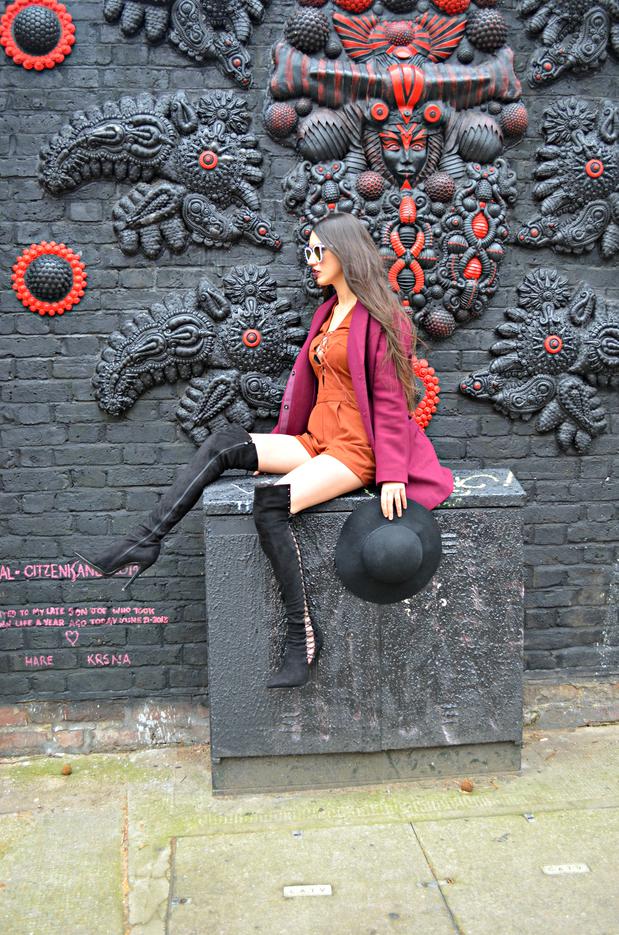Forgotten
‘In the crypt of forgotten shops lies remnants of childhoods past, Pic and Mix rotting with age, dismembered dolls sleep with one eye open, Scratched windows in murky shadows, sold to the highest bidder, Isolated toys in a timeless wasteland of disoppurtunity, Caught souls resting in the plastic cartoon faces, Sleeping children frozen in the timewarp, Blinds shut close, no mention of sunlight’

Like social media the growth of e-commerce shopping has burst into popularity following the increase of mobile and computer based purchases between 2014-2015. Online shopping turns over a profit of 91 million a year with 75% of consumers completing their purchases online and has revolutionalized the way we consume and produce goods. But the online shopping revolution has impacted on the traditional high street market brands we knew and loved with stores like Woolworths and Blockbusters entering the reccession during 2008’s credit crisis. With the disappearence of high street chains and the strength of e-commerce sales increasing is online shopping killing the high street?
Until 1979 shopping was done via markets, jumble sales and shopping centres where thousands flocked to buy fresh produce and luxury goods such as clothing and perfume. Disposable income meant that many young adults and teens were able to splash out on luxury items and sustain the growth of luxury commerce. But there was a dilemna. In 1979 English entrepreneur Michael Aldrich invented online shopping by connecting a modified domestic TV to a real- time transaction processing computer via a domestic telephone line. Online shopping was tested in beta at first and was introduced to consumers for commercial use in 1991, after Tim Berners- Lee created the first world wide web server and browser. Other ‘online’ innovations included online banking (1994), Amazon and Ebay (1995) and the first secure retail transaction over the web via NetMarket/Internet Shopping Network (1994). With the introduction of e-commerce shopping, buying goods and purchasing services had never been easier.

The invention of online shopping meant for the first time consumers had control over their purchases and an inventory i.e. a virtual basket which contained their selected items. Online shopping was becoming increasingly popular with the younger generation whose smartphones contained apps such as Ebay , making e-commerce more popular than the high street in the mid 2,000’s and by 2010 social media giant Instagram made online shopping even easier by intergrating e-commerce platform Like To Know. Like To Know It allowed users to ‘shop the look’ of their favourite Instagrammers without leaving their homes, a desirable thought for most consumers. But what effect did this have on the high street? With 75% of us now shopping online, high street retail giants are struggling to turnover profit and it has left many chain stores to go bust or attempt to restructure its approach to consumerism in order to evolve with the technological times.
Does this mean that online shopping is killing the high street? Lets take a look; in 2008 Britain’s retail infastructure collapsed with multi-million budget chains Woolworths, Blockbusters and Land Of Leather going into administration before permenantly shutting its doors. Even top UK retailer Tescos has seen a dip in its shareholds with a 6.4 billion loss in 2014 and they are not the only one. Each week top retailers are being brought out by other shareholders in attempts to save it from going bust and retructure the way that they sell goods to consumers. A good example is HMV who has gone into administration three times in the last decade but has somehow managed to come back from the retail swamp because it merged with a new sub-letter to appeal to a wider target audience. It is clear that the prominience of online shopping outlets such as Amazon and Asos have been instrumental in restructuring the way that we approach shopping but does that mean that online shopping is killing the high street?

Not neccessarily, in fact there is evidence to suggest that retailer giants like Blockbusters went under because they failed to keep up with consumer trends. By 2008 consumers were gravitating towards e-commerce shopping because it fufilled their needs as a full-time worker, parent or student and it was these groups that avoided the high street because it no longer became convenient for them to comprimise their time. Many retailers like John Lewis and Tescos have introduced e-commerce shopping through ‘click and collect’ services which have combined the practicality of online payment with real-life ‘viewing’. Their ability to adapt to the times is insightful and has allowed them to remain top retailers since they were established in 1864 ( John Lewis) and 1919 ( Tescos).
This is a lesson that all other retailers must learn, in order to survive on the high street you must either open an ‘online shop’ or offer a niche that cannot be found online. Niche shops such as bakeries and butchers have seen a resurgence in profits because their magic formula exists purely on tradition and some traditions are best kept the same. On the other hand the only other option for high street chains is to introduce an online shop because they offer no niche that makes them stand out against the thousands of online retailers .
The future of high street chain retailers remains in balance but one thing is for certain. If high street brands don’t adapt to the changing structure of commerce retail then they risk going into administration for the very last time and that is something that retailers should avoid at all costs.

What are your thoughts? Is online shopping killing the high street?
Much Love Springbots xox
Photography -Jumanna Khanom
Sunglasses- Quay Australia
Boots and Playsuit- Lily Lulu
Hat- Asos
Coat-Topshop
I don’t even know how I ended up here, but I thought this
post was great. I do not know who you are but certainly you’re going to a famous blogger if you are not already 😉 Cheers!
Touche. Outstanding arguments. Keep up the amazing spirit.
Hold on lady! How fabulous do you look. I love the arguments for and against! If I am honest I do prefer it online, I absulouetly hate crowds and 9 times out of 10, what I want is never in stock!